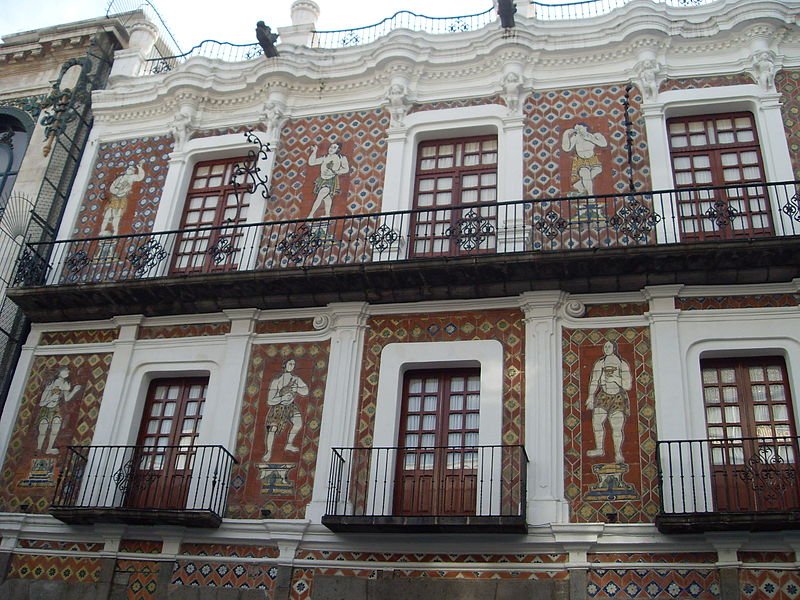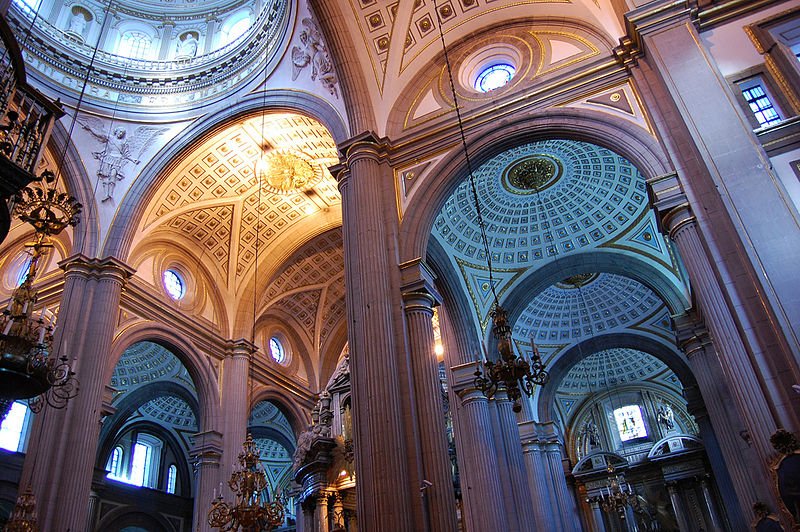 Casa de la China Poblana, Puebla, Mexico
Casa de la China Poblana, Puebla, MexicoSource: https://commons.wikimedia.org/wiki/File:Casa_de_la_China_Poblana_2.JPG
Author: Gustavo Velarde

Puebla is the fourth largest city in Mexico. It is often popularly known as Puebla, Puebla, as it is also the capital of the state of Puebla. It covers 534.32 sq km (206.3 sq mi) and has a population of 1.54 million people (2011 estimate), within a metropolitan area of 2.7 million.
Puebla is a planned city created in 1531 in a valley area called Cuetlaxcoapan. The valley was uninhabited, but is a sort of no-man's-land between the native settlements of Tlaxcala and Cholula. The pre-Hispanic tribes used the area as a sacrificial site of captured warriors during the Flower Wars of the 15th century.
Puebla is located within 40 km of two snow-capped volcanoes, Popocatépetl and Iztaccíhuatl, which fringe the horizon. Other peaks in the area include La Malinche to the north and Pico de Orizaba to the east. The Atoyac River flows through Puebla and connects with Lake Valsequillo at the Manuel Ávila Camacho Dam.
Puebla experiences a subtropical highland climate. However, being at an elevation of 2,200 m (7,218 ft) has somewhat moderated the climate, so that it is never extremely hot in the city. April is the warmest month, when the average high temperature rises to 23°C (73°F). Coldest average temperature can be expected in December and January, when it drops to 8°C (46°F). June is the wettest month, receiving 160 mm (6.3 in) of rain.
 Casa de los Muñecos, Puebla
Casa de los Muñecos, PueblaSource: https://commons.wikimedia.org/wiki/File:Casa_de_los_Mu%C3%B1ecos.JPG
Author: Wicki

The tourist attractions of Puebla are historical and cultural. The old town has well preserved colonial architecture. This has been inscribed as a World Heritage Site in 1987 entitled the Historic Centre of Puebla.
Visiting Puebla
You can reach Puebla by bus from Mexico City. There are long-distance buses from TAPO, the main bus terminal in Mexico City, and from the Benito Juarez International Airport. The journey takes about 2 hours and costs 110 pesos from Mexico City and 170 pesos from the airport. Street in the Historic Center of Puebla
Street in the Historic Center of PueblaSource: https://commons.wikimedia.org/wiki/File:Callej%C3%B3n_de_los_sapos.JPG
Author: Gusvel

Places of Interest in Puebla
- Barrio del Artista (Artist's Quarter)
A neighborhood near the marketplace; it is dominated by the homes of artisans and craftsmen. - Biblioteca Palafoxiana
Historic library that houses some 50,000 volumes, including a rare 16th century Bible. - Casa de los Muñecos
18th century residence of a mayor finished with a façade of red tiles. - Casa del Alfeñique (Sugarpaste House)
House so named because its plasterwork resembles icing sugar. - Cerro de Guadalupe
A large public park that has within its perimeters two old forts and several museums. It is the site of the Battle of Puebla in 1862. - Iglesia de Santo Domingo
This is one of the most ornate churches in Mexico, built in the Baroque style in the second half of the 17th century. - Museo Amparo
Museum has one of the finest collection of pre-Columbian and colonial works of art. It is housed in a former 18th century hospital building. - Museo de la Revolución Mexicana
The 1910 Mexican Revolution is said to be ignited from this house that is today a museum recounting that chapter in history. - Museo de Santa Mónica
Museum housed in a former 17th century tile-and-brick cloister, where nuns lived in hiding during the years of clerical persecution, until 1933. The museum today houses religious art such as paintings, sculptures and other ecclesiastical artifacts. - Museo de Santa Rosa
A former 17th century convent located six blocks north of the city center, today housing a museum to display the local handicrafts from around the state. - Museo José Luis Bello
Museum housing the disparate collection of local 19th century industrialist, assembled without ever leaving the city. - Puebla Cathedral
17th century cathedral at the heart of the city with an octagonal altar. The cathedral has two bell towers offering splendid views of the city and the two volcanoes. - Taller Uriarte Talavera
Pottery workshop with guided tours to explain the pottery-making process. - Templo de San Cristóbal
Once part of an orphanage built in the 17th century, this church has a display of colonial sculptures.
 The interior of Puebla Cathedral
The interior of Puebla CathedralSource: https://commons.wikimedia.org/wiki/File:Catedral_Puebla_Interior.jpg
Author: Alejandro Quintanar Helgueros

 Latest updates on Penang Travel Tips
Latest updates on Penang Travel Tips

Copyright © 2003-2025 Timothy Tye. All Rights Reserved.

 Go Back
Go Back